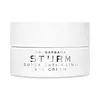What's inside
What's inside
 Key Ingredients
Key Ingredients

 Benefits
Benefits

 Concerns
Concerns

 Ingredients Side-by-side
Ingredients Side-by-side

Hexyl Laurate
EmollientCellulose
AbsorbentPolyethylene
AbrasiveCaprylic/Capric Triglyceride
MaskingOctyldodecanol
EmollientPhenoxyethanol
PreservativeButylene Glycol
HumectantCaffeine
Skin ConditioningSilica Silylate
EmollientTocopheryl Acetate
AntioxidantAmmonium Polyacryloyldimethyl Taurate
Emulsion StabilisingSodium Citrate
BufferingDimethicone/Polyglycerin-3 Crosspolymer
CleansingChlorphenesin
AntimicrobialBoron Nitride
AbsorbentAlumina
AbrasiveGlycyrrhetinic Acid
Skin ConditioningCI 77891
Cosmetic ColorantMenthoxypropanediol
MaskingSorbitol
HumectantVaccinium Myrtillus Fruit Extract
Skin ConditioningSynthetic Fluorphlogopite
Sodium Phytate
Carbomer
Emulsion StabilisingSodium Lactate
BufferingPolysorbate 20
EmulsifyingPunica Granatum Fruit Extract
AntioxidantGlycol
HumectantAlcohol
AntimicrobialPalmitoyl Tripeptide-1
Skin ConditioningTocopherol
AntioxidantPalmitoyl Tetrapeptide-7
Skin ConditioningPentaerythrityl Tetra-Di-T-Butyl Hydroxyhydrocinnamate
AntioxidantHexyl Laurate, Cellulose, Polyethylene, Caprylic/Capric Triglyceride, Octyldodecanol, Phenoxyethanol, Butylene Glycol, Caffeine, Silica Silylate, Tocopheryl Acetate, Ammonium Polyacryloyldimethyl Taurate, Sodium Citrate, Dimethicone/Polyglycerin-3 Crosspolymer, Chlorphenesin, Boron Nitride, Alumina, Glycyrrhetinic Acid, CI 77891, Menthoxypropanediol, Sorbitol, Vaccinium Myrtillus Fruit Extract, Synthetic Fluorphlogopite, Sodium Phytate, Carbomer, Sodium Lactate, Polysorbate 20, Punica Granatum Fruit Extract, Glycol, Alcohol, Palmitoyl Tripeptide-1, Tocopherol, Palmitoyl Tetrapeptide-7, Pentaerythrityl Tetra-Di-T-Butyl Hydroxyhydrocinnamate
Water
Skin ConditioningHelianthus Annuus Seed Oil
EmollientGlycerin
HumectantPotassium Cetyl Phosphate
EmulsifyingOctyldodecanol
EmollientCetyl Alcohol
EmollientCoco-Caprylate
EmollientPrunus Amygdalus Dulcis Oil
Skin ConditioningLactobacillus/Portulaca Oleracea Ferment Extract
AntioxidantHydrogenated Palm Glycerides
EmollientAcacia Senegal Gum
MaskingFructose
HumectantBrassica Campestris Sterols
EmollientCaprylic/Capric Triglyceride
MaskingPrunus Armeniaca Kernel Oil
MaskingMangifera Indica Seed Oil
EmollientAlbizia Julibrissin Bark Extract
MaskingAesculus Hippocastanum Extract
AntioxidantPanax Ginseng Root Extract
EmollientHydrolyzed Algin
Sodium Hyaluronate
HumectantLeuconostoc/Radish Root Ferment Filtrate
AntimicrobialCeramide NP
Skin ConditioningDarutoside
Skin ConditioningPanthenol
Skin ConditioningButylene Glycol
HumectantMaris Aqua
HumectantHydrogenated Lecithin
EmulsifyingPentylene Glycol
Skin ConditioningHydrolyzed Rhizobian Gum
Xanthan Gum
EmulsifyingEthylhexylglycerin
Skin ConditioningButyrospermum Parkii Butter
Skin ConditioningC12-16 Alcohols
EmollientPalmitic Acid
EmollientSqualane
EmollientSodium Phytate
Tocopherol
AntioxidantCitric Acid
BufferingSucrose
HumectantPantolactone
HumectantSodium Benzoate
MaskingPhenoxyethanol
PreservativePotassium Sorbate
PreservativeAlcohol
AntimicrobialWater, Helianthus Annuus Seed Oil, Glycerin, Potassium Cetyl Phosphate, Octyldodecanol, Cetyl Alcohol, Coco-Caprylate, Prunus Amygdalus Dulcis Oil, Lactobacillus/Portulaca Oleracea Ferment Extract, Hydrogenated Palm Glycerides, Acacia Senegal Gum, Fructose, Brassica Campestris Sterols, Caprylic/Capric Triglyceride, Prunus Armeniaca Kernel Oil, Mangifera Indica Seed Oil, Albizia Julibrissin Bark Extract, Aesculus Hippocastanum Extract, Panax Ginseng Root Extract, Hydrolyzed Algin, Sodium Hyaluronate, Leuconostoc/Radish Root Ferment Filtrate, Ceramide NP, Darutoside, Panthenol, Butylene Glycol, Maris Aqua, Hydrogenated Lecithin, Pentylene Glycol, Hydrolyzed Rhizobian Gum, Xanthan Gum, Ethylhexylglycerin, Butyrospermum Parkii Butter, C12-16 Alcohols, Palmitic Acid, Squalane, Sodium Phytate, Tocopherol, Citric Acid, Sucrose, Pantolactone, Sodium Benzoate, Phenoxyethanol, Potassium Sorbate, Alcohol
 Reviews
Reviews

Ingredients Explained
These ingredients are found in both products.
Ingredients higher up in an ingredient list are typically present in a larger amount.
Alcohol comes in many different forms. Different types of alcohol will have different effects on skin. This ingredient is usually an astringent alcohol.
These alcohols are drying on the skin. They may strip away your skin's natural oils and even damage your skin barrier. Astringent alcohols may also irritate skin.
Other types of astringent alcohols include:
According to the National Rosacea Society based in the US, you should be mindful of products with these alcohols in the top half of ingredients.
Any type of sanitizing product will have high amounts of alcohol to help kill bacteria and viruses.
Fatty alcohols come from plant oils such as coconut oil. These can help hydrate the skin and are non-irritating. Some fatty alcohols include cetyl and stearyl alcohol.
Learn more about AlcoholButylene Glycol (or BG) is used within cosmetic products for a few different reasons:
Overall, Butylene Glycol is a safe and well-rounded ingredient that works well with other ingredients.
Though this ingredient works well with most skin types, some people with sensitive skin may experience a reaction such as allergic rashes, closed comedones, or itchiness.
Learn more about Butylene GlycolThis ingredient is an emollient, solvent, and texture enhancer. It is considered a skin-softener by helping the skin prevent moisture loss.
It helps thicken a product's formula and makes it easier to spread by dissolving clumping compounds.
Caprylic Triglyceride is made by combining glycerin with coconut oil, forming a clear liquid.
While there is an assumption Caprylic Triglyceride can clog pores due to it being derived from coconut oil, there is no research supporting this.
Learn more about Caprylic/Capric TriglycerideOctyldodecanol is a fatty alcohol. It is primarily used to enhance the texture of products.
As an emulsifier, Octyldodecanol helps prevent the oils and waters from separating. It also prevents ingredients from creating foam when shaken.
Octyldodecanol is created by reducing fatty acid to an alcohol.
Due to its high molecular weight, it does not get absorbed into the skin.
Learn more about OctyldodecanolPhenoxyethanol is a preservative that has germicide, antimicrobial, and aromatic properties. Studies show that phenoxyethanol can prevent microbial growth. By itself, it has a scent that is similar to that of a rose.
It's often used in formulations along with Caprylyl Glycol to preserve the shelf life of products.
Sodium Phytate is the synthetic salt form of phytic acid. Phytic acid is an antioxidant and can be found in plant seeds.
Sodium Phytate is a chelating agent. Chelating agents help prevent metals from binding to water. This helps stabilize the ingredients and the product.
Tocopherol (also known as Vitamin E) is a common antioxidant used to help protect the skin from free-radicals and strengthen the skin barrier. It's also fat soluble - this means our skin is great at absorbing it.
Vitamin E also helps keep your natural skin lipids healthy. Your lipid skin barrier naturally consists of lipids, ceramides, and fatty acids. Vitamin E offers extra protection for your skin’s lipid barrier, keeping your skin healthy and nourished.
Another benefit is a bit of UV protection. Vitamin E helps reduce the damage caused by UVB rays. (It should not replace your sunscreen). Combining it with Vitamin C can decrease sunburned cells and hyperpigmentation after UV exposure.
You might have noticed Vitamin E + C often paired together. This is because it is great at stabilizing Vitamin C. Using the two together helps increase the effectiveness of both ingredients.
There are often claims that Vitamin E can reduce/prevent scarring, but these claims haven't been confirmed by scientific research.
Learn more about Tocopherol